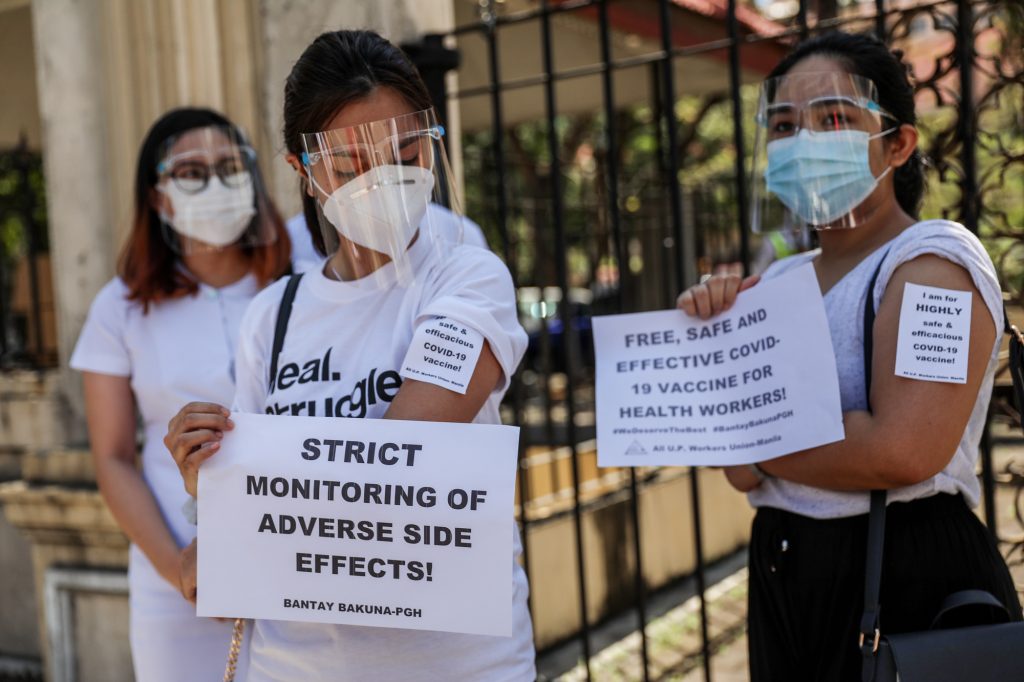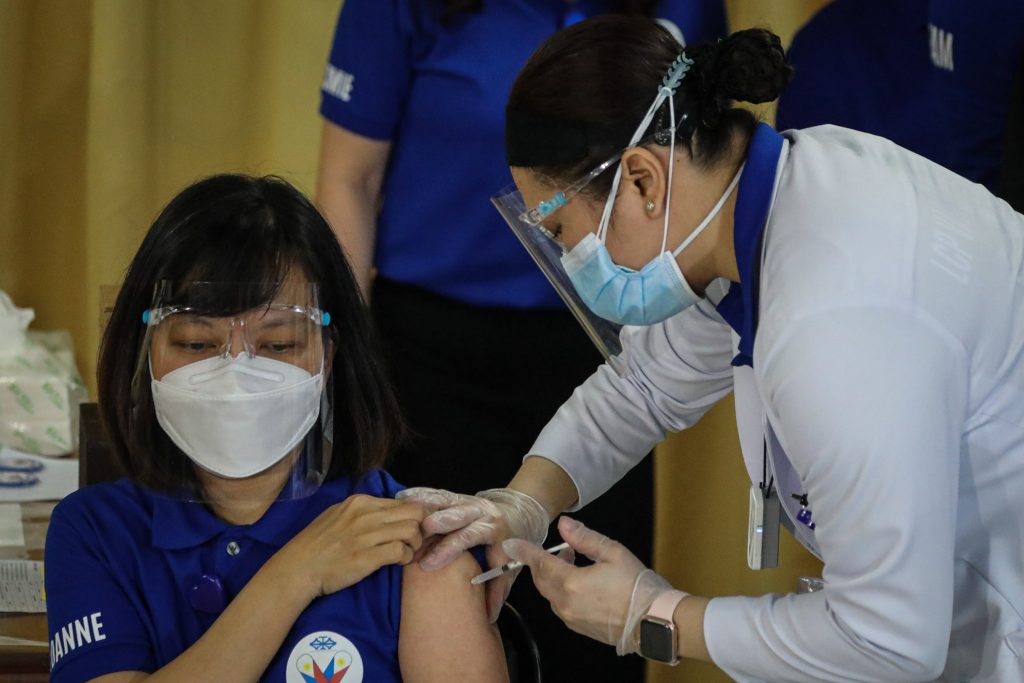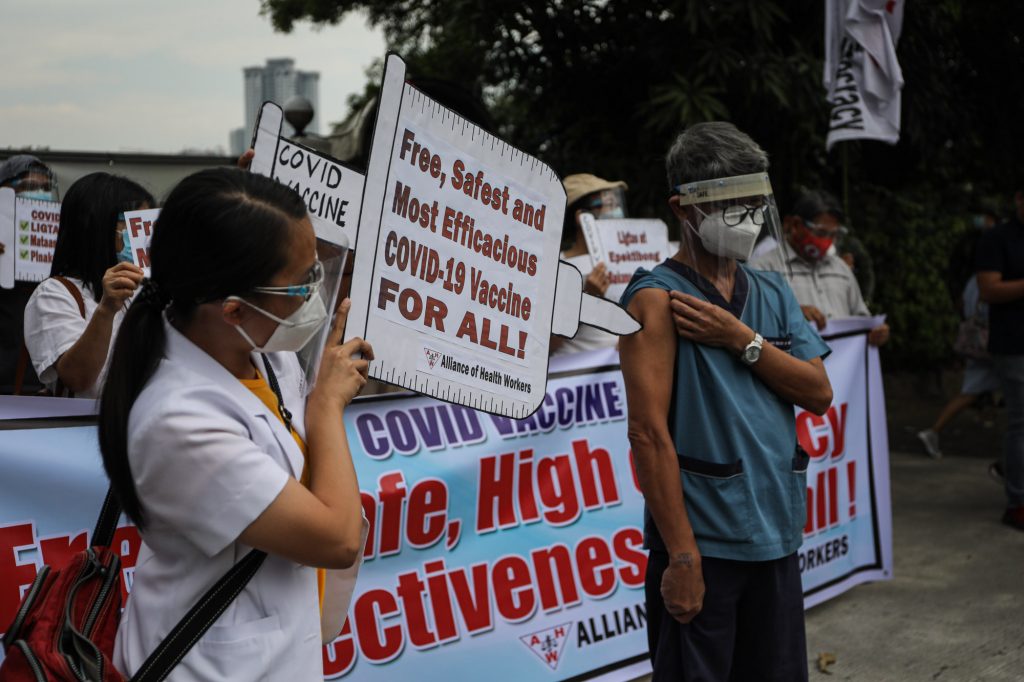
Did you know that there have been close to 20 recorded pandemics in history?
The earliest known outbreak of disease was recorded in Athens, Greece around 430 B.C. It was the time of the Peloponnesian War. If you recall the movie 300, where Greece united to fight off the Persian invasion, the Peloponnesian War began soon after that. It was a war for dominance between Athens and Sparta.
The pandemic spread through Libya, Ethiopia and Egypt within the span of 15 years, killing two-thirds of the population. The symptoms included lesions, fever, extreme thirst, bloody throat and tongue, swollen red skin, all pointing to the earliest known typhoid outbreak in history.
I did a bit of reading on the subject of pandemics shortly after the 600,000 Sinovac vaccines arrived on Philippines shores on Feb. 28. It is apparent from historical records that much of these viral infections had spread due to troop movements in preparation for war.
The Antonine Plague in 165 A.D., which spread across much of the Roman Empire and Germanic tribes because of the Huns, had claimed the life of the great philosopher-emperor, Marcus Aurelius. The plague wreaked havoc in that part of the world for 15 years.
One interesting piece of pandemic history was the Justinian Plague, or what historians call the earliest version of the bubonic pestilence which spread from the Byzantine empire, much of Palestine, and all across the Mediterranean.
This particular plague was infamous for its ability to recur, which it did despite of the efforts to stop it in the next two centuries. It was so virulent that it killed as much as 50 million people. The disease was borne by fleas and spread by rats.
Another interesting piece of pandemic trivia was the arrival of Christopher Columbus to the Americas, bringing with his expedition smallpox, measles and bubonic plague which infected the indigenous people. The Taino people in Hispanolia, which had a population of 60,000, allegedly dwindled to 500 after Columbus’ arrival.
As we recall the half millennia since the docking of Fernando Magallanes (Ferdinand Magellan) fleet and the Catholic faith in our shores, I wonder, what other plagues did they bring aside from colonial atrocities?
I know his expeditionary forces were racked by scurvy, an extreme Vitamin-C deficiency found in sailors at the time. Outside of this, very little is mentioned at all.
I consulted esteemed De La Salle University historian Jose Victor Torres on the matter and he said there has never been any record of any plague or disease outside of scurvy during Magallanes’ arrival in the Philippines.

I have, however, reason to suspect. See, when Magallanes left Spain in 1519, a little over 9,000 kilometers away in what is now called Mexico, Hernán Cortés, a conquistador, arrived and brought with him a plague of smallpox. It killed nine million of its native population.
Here’s one for the books. A year earlier, the year 1518, particularly in Strasbourg, Alsace (now modern-day France), about 400 people took to the streets and danced for days. Yes, danced.
The Dancing Plague, it’s now known, may have been caused by food poisoning, in particular a psychoactive drug found in ergot fungus where ergotamine, the main psychoactive ingredient found in LSD (lysergic acid diethylamide), can be found. However, history has been silent as to the event’s overall viral or bacterial cause.
Let’s not forget the cholera epidemic of 1817. This disease, one of the most infectious compared to the Black Death of 1350 and Spanish Influenza of 1918, was said to have appeared first in Russia and spread over thousands of miles via troop movements into Spain, Africa, Indonesia, China, Japan, Italy, Germany and America. It was said to have initially killed 150,000 people.
Cholera arrived in the Philippines several decades later, sometime September 1882. To lend some context, our national hero Dr. José Rizal had left for Spain onboard the Salvadora in May of the same year, proceeding from Marseilles to Barcelona by train.
It was through a series of correspondences from his brother, Paciano, his sister Narcisa and her husband, Antonino López, that Rizal got wind of the epidemic.
In what now has become a book, Letters Between Rizal and Family Members, Rizal received a letter from Paciano dated July 24, 1882, and said, “There is cholera in Manila and they say they are hiding it very carefully, so that abroad they will not declare this port dirty and consequently create another obstacle to the export trade. In our town we had three cases in the course of one month and all of them fatal.”
The people’s reaction to the cholera pandemic was anything but scientific. If it weren’t so risky and fatal, much of it would’ve been really funny. They suspected dried fish as the culprit.

In a letter dated Aug. 24, 1882, Rizal received a letter from his brother-in-law Antonino López, promising Rizal some money and giving news on how their little barrio were trying to fight off the contagion.
“Here in Calamba,” Antonino López said, “as well as in every barrio, there is a procession every night praying God to spare the town of the plague. All foodstuffs that may cause illness, like those with bad smell, such as small dried fish, pickled fish and the like, are forbidden. Therefore, the town of Calamba is very clean.”
In a succeeding letter still dated August, Paciano mentioned how people would gather around huge bonfires to “disinfect” themselves of cholera.
“Now that the plague is at its peak, an average of 15 persons die daily,” Paciano continued. “From night to morning, healthy and robust men become corpses or at least, so completely unrecognizable and emaciated, hovering between life and death […] Their relatives, even the closest ones flee away; they are not taken cared of, and if they are attended to, they become a heavy burden to their companions in the house who fear contagion. They are wrapped up and buried with the Chinese. It is a sad thing to die under these circumstances and of this disease; one is exposed to be devoured by dogs.”
We are, despite humanity’s privileged position, at the mercy of Mother Nature.
This leads me to the conclusion that vaccines are a marvel of science, the COVID-19 vaccine not the least. It’s humanity’s way of pushing back the onslaught of death and disease, allowing us to soldier on and even benefit from this through millennia of adaptation.
As for COVID-19, it took pharmaceutical and biotech companies only about a year to develop several vaccines for COVID-19, which in and by itself is a feat.
Normally, it takes 10 years and roughly $500 million to develop a vaccine. Research alone takes 2-5 years where 100 potential vaccines will be discovered and set for pre-clinical trials. The five-step development and logistics that go into the development is mindboggling.
While vaccines are formulated using varying methods, it is safe to say that no real vaccine which passed clinical trials imperils anyone.
Save for a few side effects—a bit of nausea, some feelings of fatigue, physical manifestations like hives or rashes as people need more than two weeks to build immunity—most COVID-19 vaccines developed today are relatively safe.
“Safe” doesn’t necessarily mean 100% effective. Which is why the Sinovac Chinese-made vaccine, however accessible, needs to be further tested.

A perfunctory reading of a list of viral and bacterial diseases still present today will tell you that past epidemics and pandemics—influenza, tuberculosis, malaria, even cholera, to name a few—remain and are very active in the world today. According to the World Health Organization, the Bubonic Plague still exists today.
Our best bet at surviving the pandemic should always be based on science, not speculation or political public relations. A drastic change in lifestyle and perspective must come into play. While President Rodrigo Duterte promises that all will be normal come 2023, we all know there is no returning to normality after COVID-19.
We must accept the reality that those who are most likely to survive are the those who can look the future full in the face, those most adaptable to change.
Joel Pablo Salud is an editor, journalist and the author of several books of fiction and political nonfiction. The views and opinions expressed in this article are those of the author and do not necessarily reflect the official editorial position of LiCAS.news.
Source: Licas Philippines
0 Comments